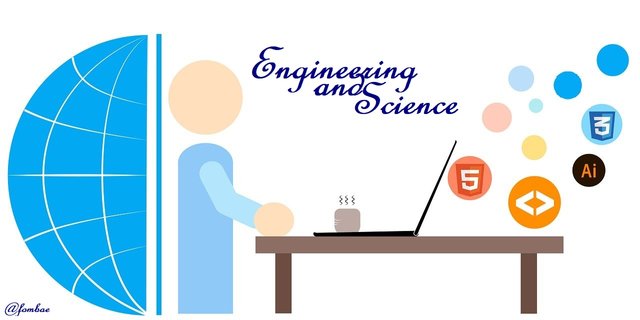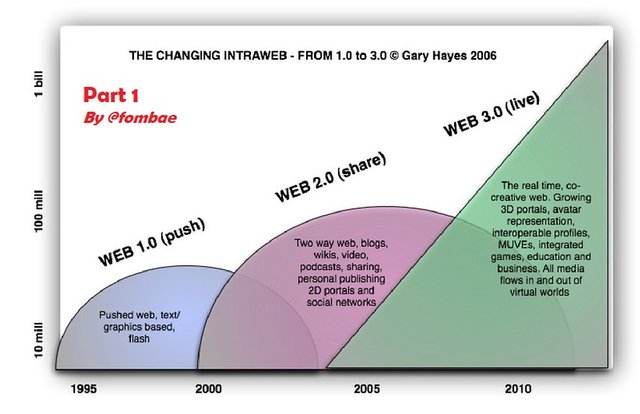Engineering and Science (Web 3.0)
 Image source Pixabay.com
Image source Pixabay.com
The future of the internet is becoming clear, with innovation in advanced web technologies. As the tech industry is looking for more ways to get the internet safer and more reliable by bringing in machine learning, artificial intelligence, and blockchain. Putting all together, web technology moves from 2.0 to 3.0. This permits the user to own their data and is paid for the time they used to browse the web. Wow, that will pull your attention to this great platform Steemit Right!. Steemit platform is a good example of web 3.0 (the future of the internet). I decided to make this post after a friend got to me asking about Web 3.0, complaining of not understanding the data gotten online. I will try to be as simple as possible, hope this helps someone too.
 Image source Flickr.com
Image source Flickr.com
What web 3.0
Web 3.0 is the innovation on the internet where data is decentralized and processed at high speed while personalizing the user experience. It is developed by bringing in machine learning, artificial intelligence, and blockchain systems. The semantic web is used for better user experience(understanding and interpreting the context and concept of the data) and the blockchain system to secure information. Web 3.0 is a useful tool for search engine optimization, helping users to access accurate and relevant data when searching online.
As I always tell my newbies, Google, Facebook, etc, and some of the giant tech companies making millions of dollars over user data online. This means these companies have been exploiting their use by making all the profit alone. With web3.0, users will be compensated for their time and data, which is what the example I site #steemit platform is doing.
Web 3.0 (third generation ) will give users the ability to browse websites and applications more securely while enjoying personalized interaction with other humans.
Key Features of Web 3.0
Here we are looking at the feature that makes web3.0 stand up over all other generations.
Open: the developer uses open-source software for developing web3.0 websites and applications open to the public on GitHub.
Trust: No intermediary in the network, permitting users to either interact publicly or privately. This free movement of data can put users at risk of either leak or receiving trustless data.
Permission: You don't need anyone's permission(controlling organization) to provide or engage in any action on the platform.
Ubiquitous: Here the internet of things comes in as web 3.0 will give the possibility of accessing the internet at any time and at any location. It will not be just about computers and smartphones, but IOT technologies adding new intelligent gadgets.
The difference between web 1.0 and web 2.0
The name, web 3.0, should ring a bell that we most have had web 1.0 and web 2.0. Let's look at the differences in these generations and the innovations to the future of the internet (web3.0)
Web 1.0
It is a read-only web, inverted in 1989 and remained active until 2005. Here users can read information written on websites. The technologies behind web1.0
- HTML (HyperText Markup Language)
- HTTP (HyperText Transfer Protocol)
- URL (Uniform Resource Locator)
Web1.0 could not search online, and browsing the internet was not as simple as now. Then came Netscape navigator in the 1990s, which aided users in browsing the internet by loading and displaying web pages.
Web 2.0
It is a read-write web and was popularized in late 2004. Here people can read and write content on websites and applications with a clear understanding. Web 2.0 is what most of us are familiar with as we can engage with each other on the internet via social media and other activities. With web2.0, users can create content for others to like, share and comment on. Web 2.0 is the move from static web pages to dynamic web pages making use of expensive servers. Examples: Facebook, Uber, etc.
Why the Birth of web 2.0 from web 1.0
Innovations in the tech industry such as Mobile, Social, and cloud are the core layer behind the driving force for the development of web 2.0.
The introduction of the iPhone in 2007, pushed the web2.0 servers to not stay at just receiving data that was added to the web as users were now connected online. So web 2.0 has to go beyond as users will have to track their whereabouts, fine directions, buy online, do financial transactions, etc.
Social media connects users, creating content, sharing photos, commenting on other content. Social media has gone as far as letting us get into strange cars with Uber via web services.
The Fall of Web 2.0 and the Need for Web 3.0
By 2012 web 2.0 became obsolete pulling user attention toward web3.0. Users started raising complaints about the use of their data by giant companies like Facebook, Google, Microsoft, and Amazon unfairly. Their data has been used without their permission. Some of these companies were suited by some individuals for taking advantage of their data.
Facebook is one of the companies for this misconduct of using its user's data and treating the users unfairly. So many of such allegations surface about other companies like Amazon, Google, etc which raise a concern about data security on web 2.0. This was the more reason for web3.0 to come into play to make use of blockchain systems to secure data on the internet.
I will be ending here, Hope you will continue my next post on the Features and importance of web 3.0 which I will be presenting the Layers of Web 3.0 and how it works.
Cheers
Thanks for dropping by
@fombae
@tipu curate
Upvoted 👌 (Mana: 5/6) Get profit votes with @tipU :)
Your post has been successfully curated by our team through @nane15. Thank you for your committed efforts, we invite you to do more and continue to post high-quality posts for a chance to win a valuable upvote from our curating team and why not be selected for an additional upvote later this week in our Top Seven.
Note: Always use the tag #fbcrypto to quickly access your post.